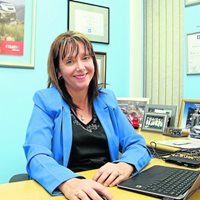 As of August 18, the Bay’s combined dam levels were sitting at 11.81% with the current daily consumption rate at more than 280 megalitres (Ml).
As of August 18, the Bay’s combined dam levels were sitting at 11.81% with the current daily consumption rate at more than 280 megalitres (Ml).
The consumption rate should be 210Ml a day.
Despite the recent heavy downpours, there has been no significant run-off to the catchment areas to increase the volume in the dams.
The municipality has been installing water-flow restrictor discs while also warning that if water consumption was not reduced, day zero would be a reality, starting with KwaNobuhle, where it is putting up water tanks in anticipation of dry taps.
Nelson Mandela Bay Business Chamber chief executive Denise van Huyssteen urged residents to reduce their daily consumption.
Van Huyssteen said Isuzu Motors SA had implemented water-saving initiatives that had reduced the company’s water consumption significantly.
She said Isuzu was harvesting rainwater for flushing their ablutions in areas too remote to use their treated effluent water.
Currently, the water tanks have 60,000 litres of water and at full capacity they will have 160,000 litres.
“The harvested water is also collected for the filling of their water-test facility, as well as topping up the fire dam.
“The effluent streams coming from the processes are treated in the company’s water treatment plant before leaving the site.
“This water is further treated, stored and reused to supply flushing water for around 80% of its ablutions,” she said.
In anticipation of day zero, the manufacturer has drilled four boreholes at its manufacturing plant, with a further two on the cards.
Van Huyssteen said the plan was for this water to be treated and used in the manufacturing processes should the metro run out of water.
The water will be used for paint pre-treatment, spraybooth humidification, cooling towers, water-test and fire system.
The Nelson Mandela University is on a water emergency and sustainability drive to address the Bay’s looming water crisis. Projections are the university’s four Summerstrand campuses and the Bird Street campus in Central could be without water from the end of next month or earlier.
“The university is increasing the storage capacity of critical buildings and residences that do not have emergency water reserves,” Van Huyssteen said.
“Most buildings already have some storage tanks and additional 95 x 5,000l water tanks have been purchased to be installed at critical areas across its campuses.
“These efforts build on the 36 water meters and electronic readers already installed at student residences on the north, south and the 2nd Avenue campuses.
“Three bulk meters were also installed on south campus, as well as electronic remote readers. An additional 58 meters for all other south campus buildings are currently being installed,” she said.
Van Huyssteen said the university was exploring the installation of flow-restrictors on the taps while also replacing the flushing mechanisms of toilets with a cistern-less system using flush valves.
Volkswagen SA spokesperson Andile Dlamini said the car manufacturer had reduced its water use 66% at the end of last year.
“We are always looking for new ways to ensure we are using water and other resources efficiently and responsibly.
“We are also in the process of installing a wastewater recycling plant, so that by the end of this year we will be able to recycle more than the 20% required by the metro,” he said.
This article appeared in The Herald (South Africa) on 19 August 2021 written by Nomazima Nkosi nkosino@theherald.co.za